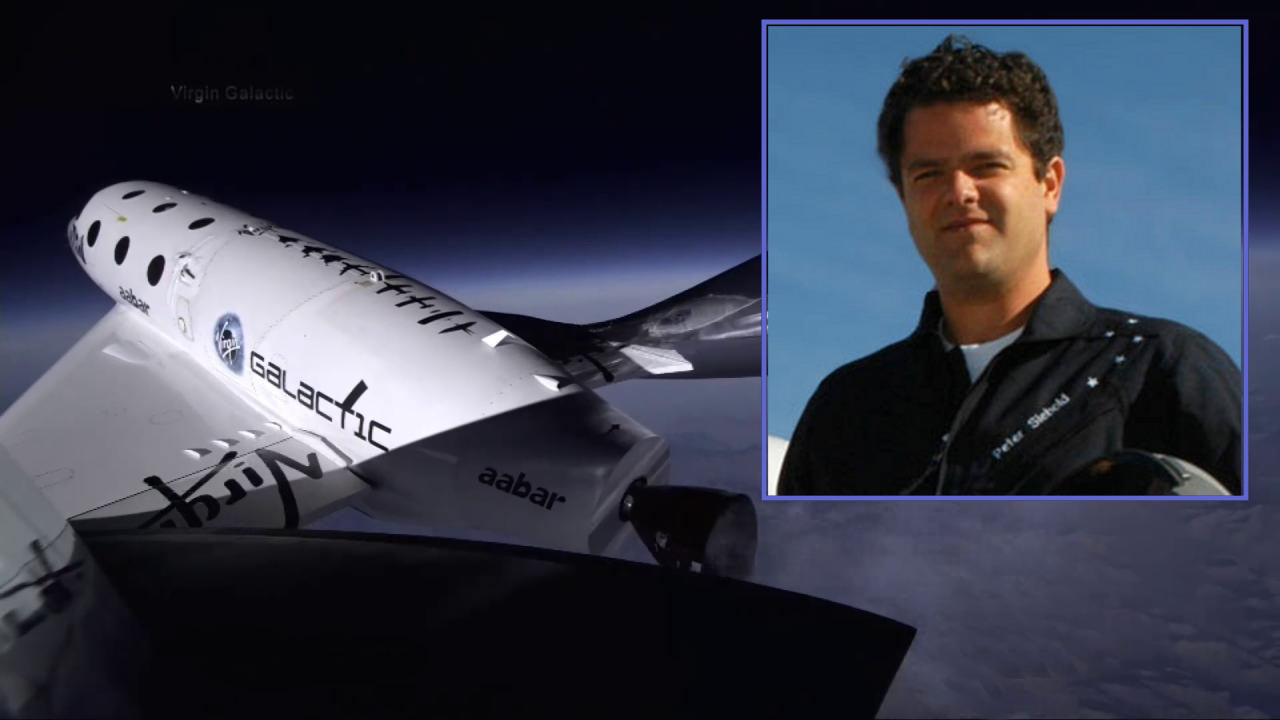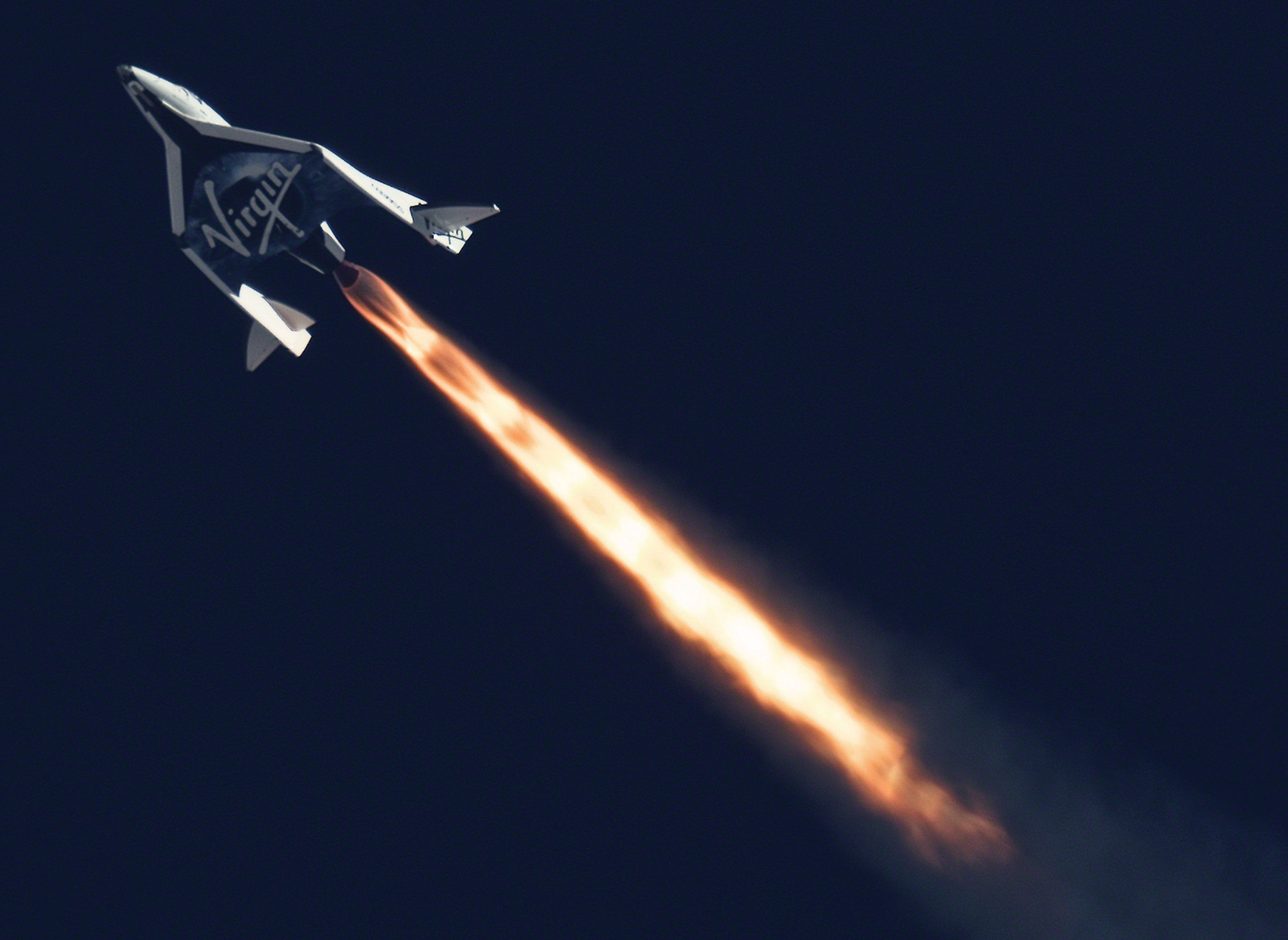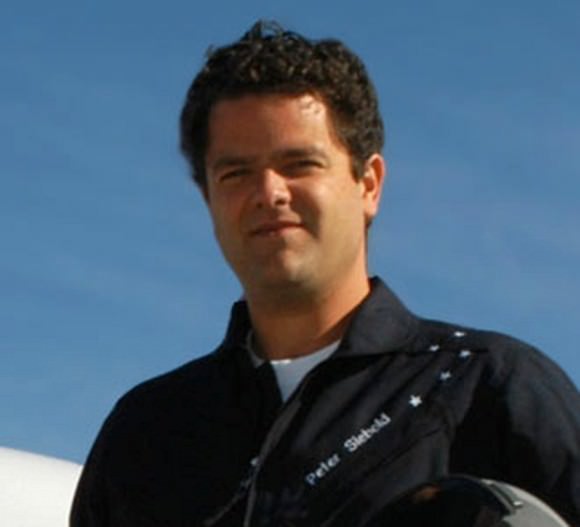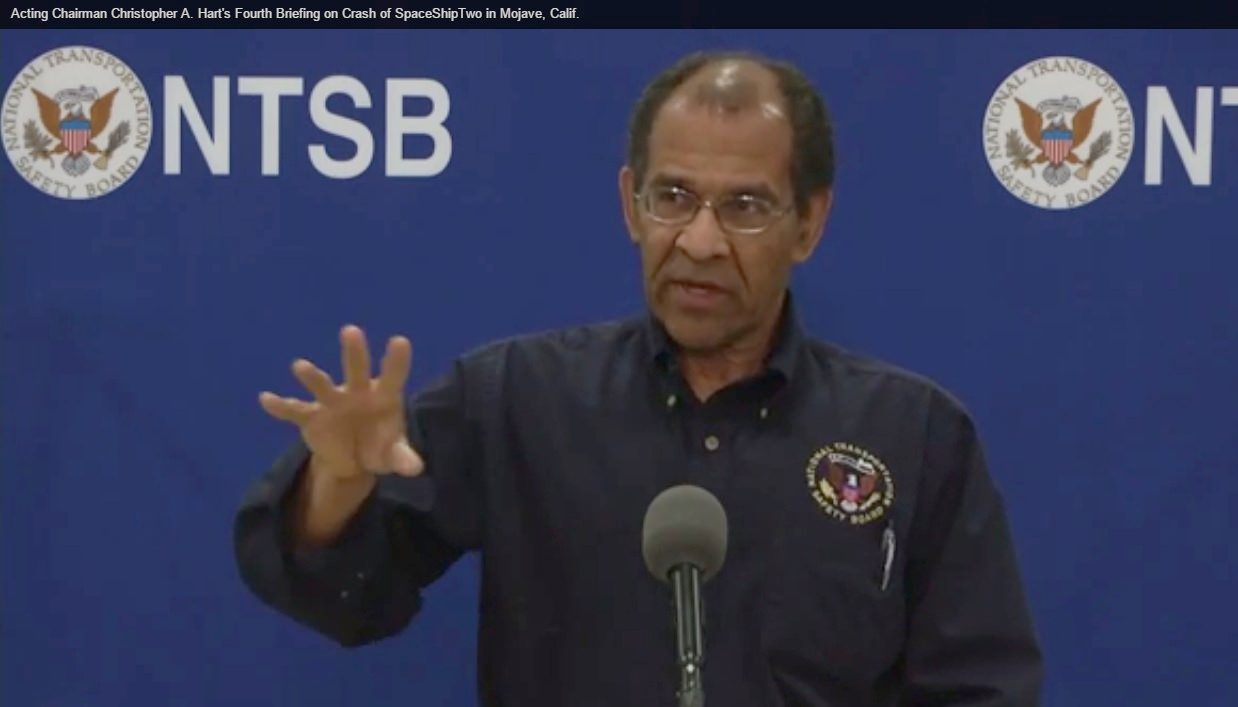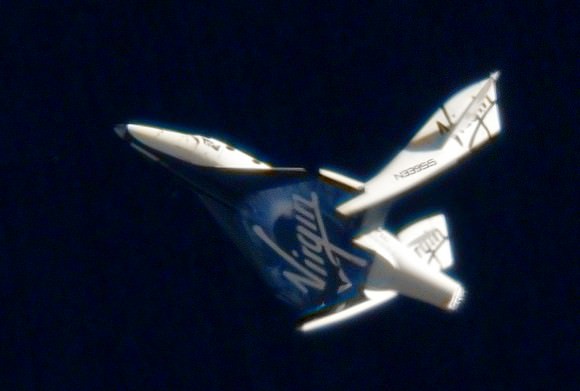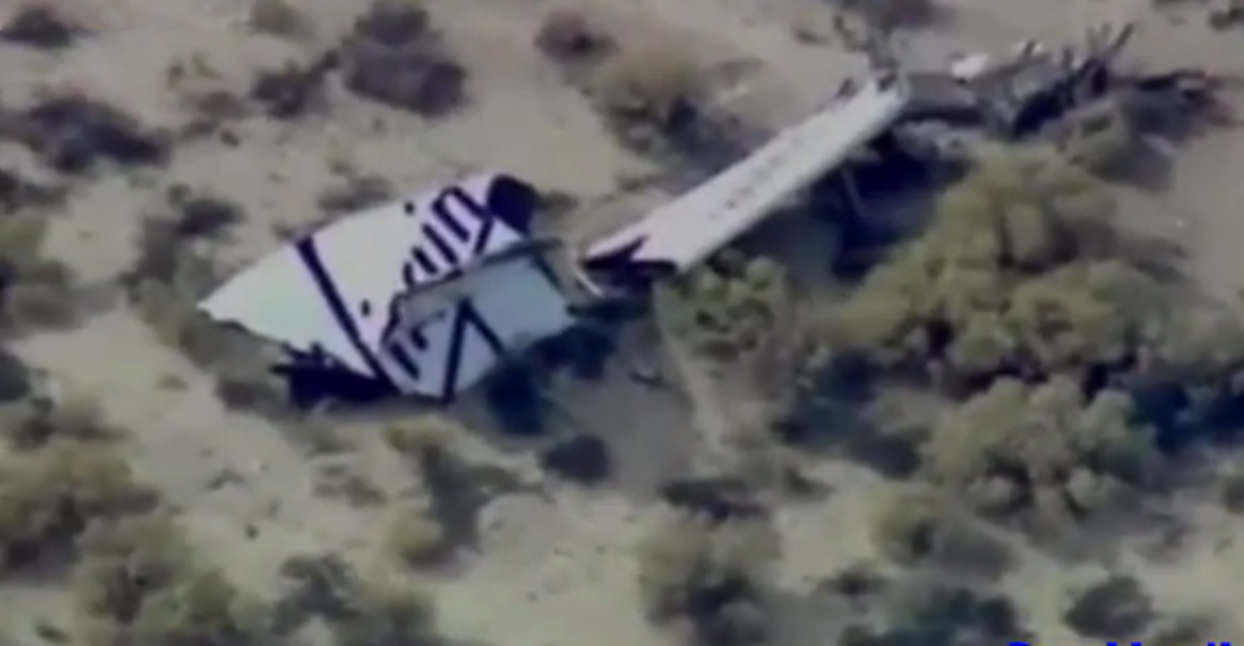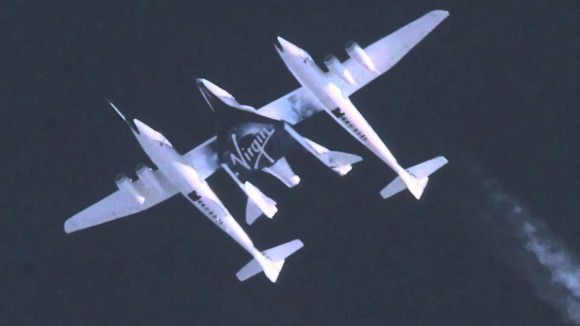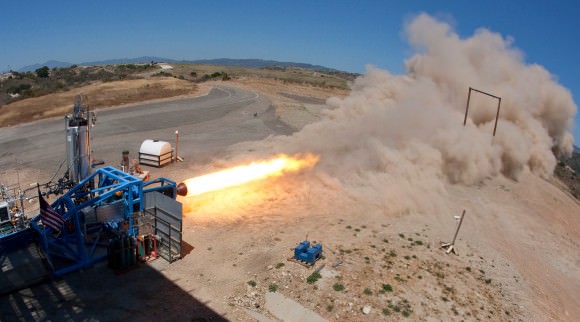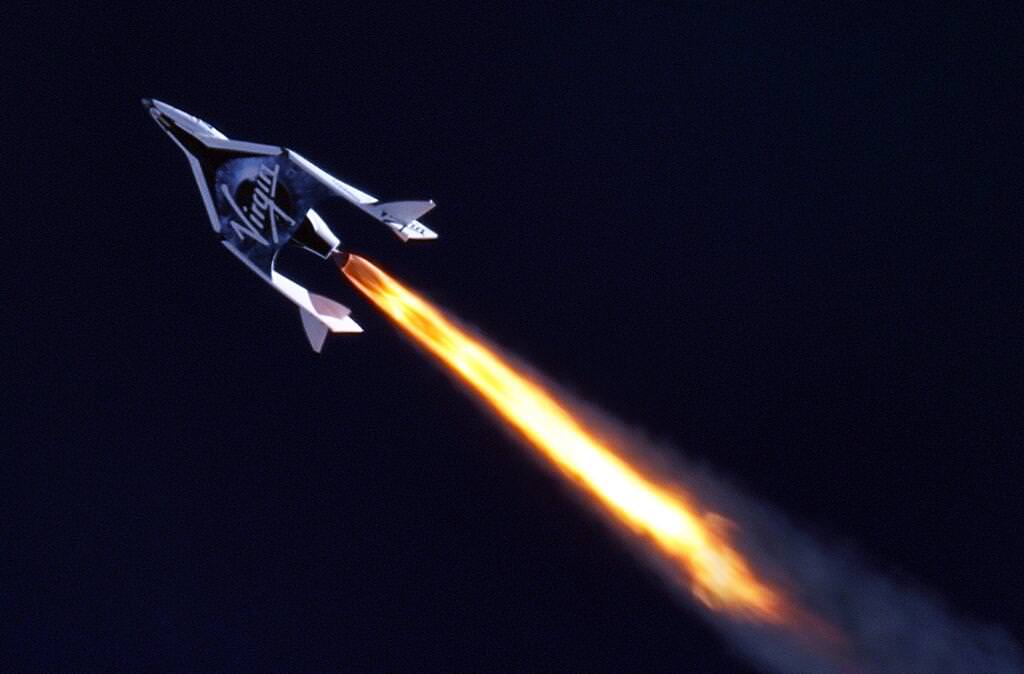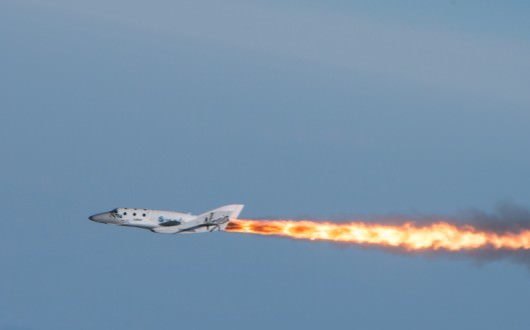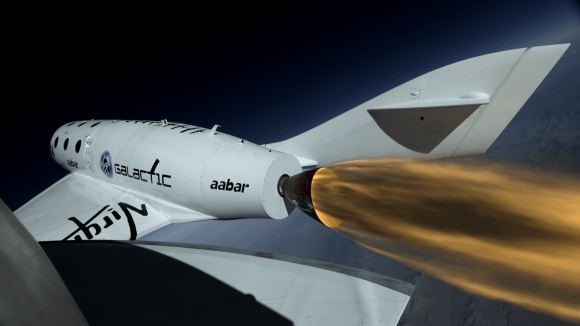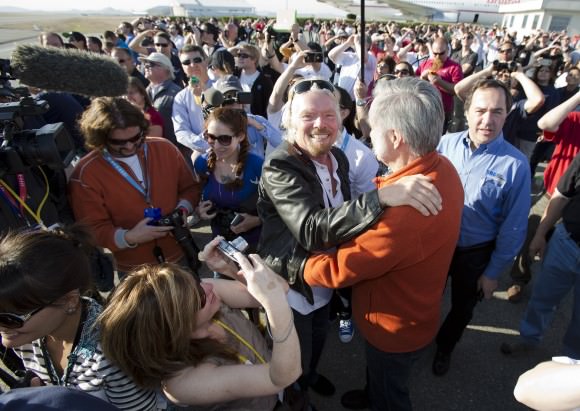Yes, there was a thumbs up. Through an interview with the father of the SpaceShipTwo pilot, the Daily Mail has reported more details of the near fatal plunge of Peter Siebold from the explosive event that destroyed Scaled Composites’ space vehicle. The ill-fated test flight resulted in the death of the co-pilot, Mike Alsbury. Siebold was visited by his father, Dr Klaus Siebold of Seattle, Washington, after Siebold was released from the hospital.
The Daily Mail story confirms what had been rumor from anonymous sources inside Scale Composites, the company founded by Burt Rutan that created the first privately developed vehicle to exceed the Karman line and reach the environs of outer space. As has been rumored, pilot Siebold, while on parachute, gave a thumbs up sign to a nearby chase plane to indicate he was conscious.
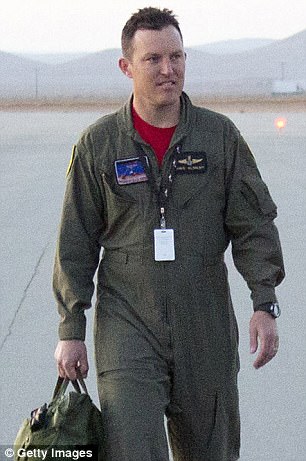
Dr. Siebold, speaking to a Daily Mail reporter, described how his son fell from 50,000 feet (15,240 meters) after SpaceShipTwo broke apart while traveling at a speed of mach 1.2, that is, 913 mph (1,470 km/hr). Early findings of the NTSB investigation have revealed that SpaceShipTwo’s twin tails feathered, that is, folded up, prematurely, creating excessive forces on the carbon composite air frame and led to the craft’s break up.
Dr. Siebold told the Daily Mail that his son is not sure how he separated from the vehicle during the violent event at supersonic speed. He could not recall any details of the sudden event. Such high speed events can take place in a matter of a second or less.
His co-pilot and close friend, Mike Alsbury, was not able to escape from the broken vehicle and fell with the debris to his death to the floor of the Mojave desert. The fall to Earth of the broken vehicle and the two test pilots took over four minutes traveling at a terminal velocity of approximately 150 mph (220 ft/sec, 67 m/s).
Dr. Siebold went on to describe his son’s narrow escape. Pilot Siebold could not recall the breakup and only recalls waking up at 20,000 feet (6096 meters). Both pilots flew with emergency parachutes. Such parachutes would not deploy or deploy correctly without the pilot separating from his pilot seat. As he awoke, Peter Siebold was sufficiently coherent to realize his circumstances and unbuckled himself. The parachute subsequently deployed but the accounting by the father, Dr. Siebold, did not make clear whether his son pulled the rip cord or the parachute was deployed automatically. Both pilots’ parachutes had mechanisms to force automatic deployment at 20,000 feet altitude. However, when a pilot is still strapped into his pilot seat, parachute deployment would be disabled or if executed, would cause severe injury to the person due to the propulsive forces that push the chute from the bag. Such forces would be forced upon the pilot’s body while locked into his seat.
The break-up led to three coinciding invasive events: sudden deceleration forces, the creation of high velocity projectiles – debris – surrounding the pilots, and a decompression event. The pilots wore simple oxygen masks without pressure suits, so their bodies withstood a split second change from cabin pressure of 1 atmosphere to that of a near-vacuum pressure. Any or all three events at breakup were responsible for the pilots’ losing consciousness within seconds if not immediately. The investigation has not revealed how co-pilot Alsbury lost his life, whether during the break-up or at impact with the Earth.
The story provides more details of Peter Siebold’s life. He has two young sons and was inspired by his father, a private pilot, to learn to fly and ultimately receive a job with Scaled Composites over ten years ago. Having no knowledge of a powered test flight that morning, Dr. Siebold described to the Daily Mail how he received a frantic call from his daughter in-law. Siebold’s wife and children were standing alongside their close friends – the children and wife of Mike Alsbury when the catastrophic event unfolded in the skies above them.
The flight took off during the early hours of October 31, 2014, on what appeared to be the beginning of a final phase of testing to qualify the spaceship for commercial flight. With early findings revealing that the event was apparently triggered by Alsbury’s inadvertently releasing the safing mechanism for feathering the tail sections, Scaled Composites and Virgin Galactic are beginning to express a likelihood that test flights will restart in as short as 6 months. Apparently, neither the NTSB nor FAA has enforced any grounding of the test program and vehicle. While pilot error may have been involved, the NTSB has included that the act of feathering the tails to slow down the vehicle during its descent from a high altitude requires unlocking the safing mechanism followed by a second step that folds the tail section. The second action would be similar to the act of lowering one’s landing flaps for landing: something which would be well understood by any private or commercial pilot.
Reference Article:

